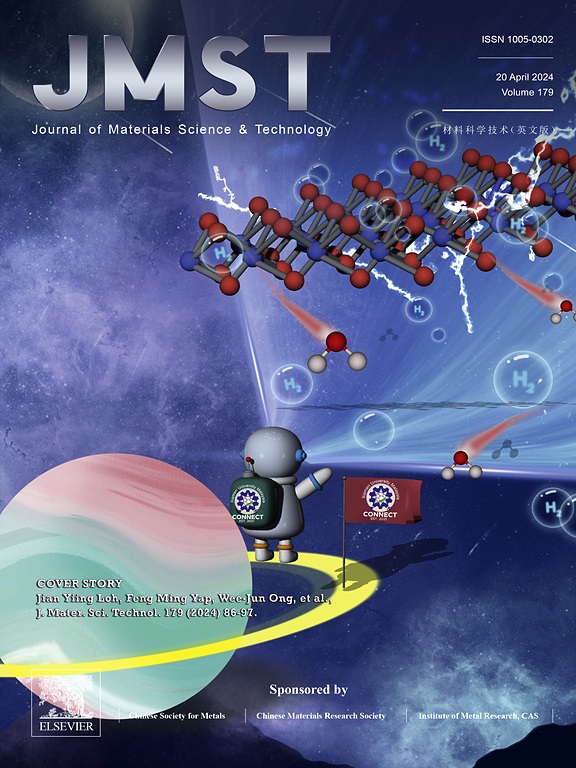电泵浦均结微激光二极管用ZnO微线的精确p型掺杂
IF 14.3
1区 材料科学
Q1 MATERIALS SCIENCE, MULTIDISCIPLINARY
引用次数: 0
摘要
低维紫外电泵浦激光器以其显著的成就和广泛的工业和民用应用潜力而受到广泛关注。本文采用p型Sb掺杂ZnO微线(Sb:ZnO MW)作为有效发射层、增益介质和腔体,设计了一种电泵浦微激光二极管。精心制作的Sb:ZnO毫微米同结微激光器具有明显的fabry - psamro模式,绝对抑制自发发射,高质量(Q)因子为1705,输出功率为24.3 μW。在该装置中,通过自催化高温工艺合成的p-Sb:ZnO MWs具有真实稳定的p型特性,空穴浓度和迁移率分别为1.15×1019 cm−3和17.6 cm2 V−1 s−1。具有显著空穴迁移率的TeO2层的掺入可以有效地注入电流,并在MW范围内实现电子-空穴复合和光子的强约束,从而促进了激光过程。值得注意的是,随着电流的增加,复合区域在MW内扩大,从而减轻了俄歇复合引起的效率下降,从而提高了输出功率。该设计成功地克服了阻碍ZnO同质结电泵浦激光器件的最终障碍,为其未来的实际应用铺平了道路。本文章由计算机程序翻译,如有差异,请以英文原文为准。

Precise p-type doping of ZnO microwires for electrically-pumped homojunction microlaser diode
Low-dimensional ultraviolet electrically pumped lasers have garnered significant attention for their remarkable achievements and broad potential in both industrial and civilian applications. Herein, we demonstrate an electrically pumped microlaser diode by employing p-type Sb-doped ZnO microwire (Sb:ZnO MW) as effective emission layer, gain medium, and cavity. The carefully-fabricated Sb:ZnO MW homojunction microlaser exhibits distinct Fabry-Pérot modes, absolutely suppressed spontaneous emission, a high quality (Q) factor of 1705, and an impressive output power of 24.3 μW. In the device, the p-Sb:ZnO MWs, synthesized via a self-catalysis high temperature process, exhibit genuine and stable p-type characteristic with hole concentration and mobility of 1.15×1019 cm−3 and 17.6 cm2 V−1 s−1, respectively. The incorporation of TeO2 layer with remarkable hole mobility enables effective current injection and strong confinement of the electron-hole recombination and photons within the MW, facilitating the lasing process. Notably, the recombination region expands within the MW as current increases, thus alleviating efficiency droop caused by Auger recombination and enabling higher output power. This design successfully overcomes the final barrier impeding ZnO homojunction electrically pumped lasing devices, paving the way for their practical application in the future.
求助全文
通过发布文献求助,成功后即可免费获取论文全文。
去求助
来源期刊

Journal of Materials Science & Technology
工程技术-材料科学:综合
CiteScore
20.00
自引率
11.00%
发文量
995
审稿时长
13 days
期刊介绍:
Journal of Materials Science & Technology strives to promote global collaboration in the field of materials science and technology. It primarily publishes original research papers, invited review articles, letters, research notes, and summaries of scientific achievements. The journal covers a wide range of materials science and technology topics, including metallic materials, inorganic nonmetallic materials, and composite materials.
 求助内容:
求助内容: 应助结果提醒方式:
应助结果提醒方式:


